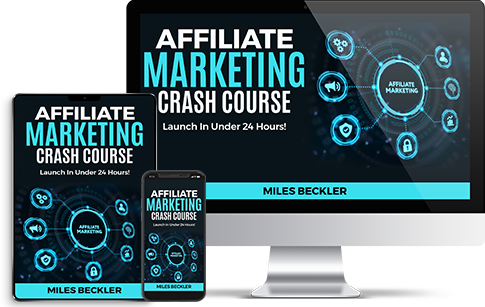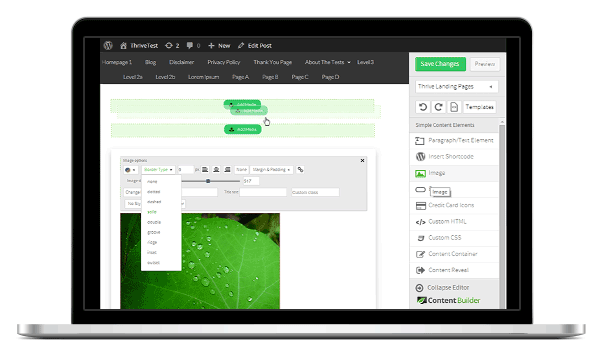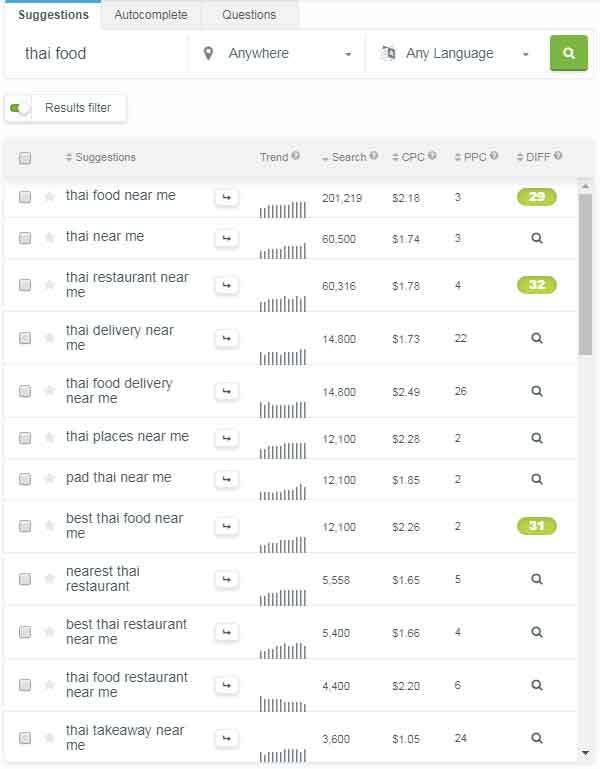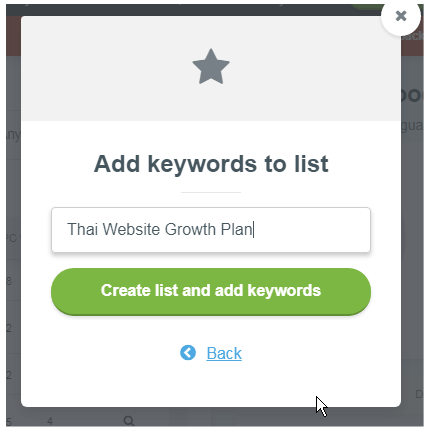How do you beat your competition online to guarantee that your business will be thriving now and continue to thrive in the future?
An effective local marketing strategy for small business owners will guaranty that success. It merely requires the right consistent effort over time.
A local strategy is not too different than dominating a national or international niche. The similar foundations are keyword research and building an authority site, but there are a few critical steps to take with your Name Address and Phone number that will give you an edge in your local market.
In this post, you will have the right foundation to build a successful local marketing strategy so that your business can thrive.
Let’s dive in so you, as a small business owner can win with these low-cost local marketing foundations.
If you'd prefer to listen to this content from the video above, play it or download it from the podcast episode below.
The Local Search Differentiator
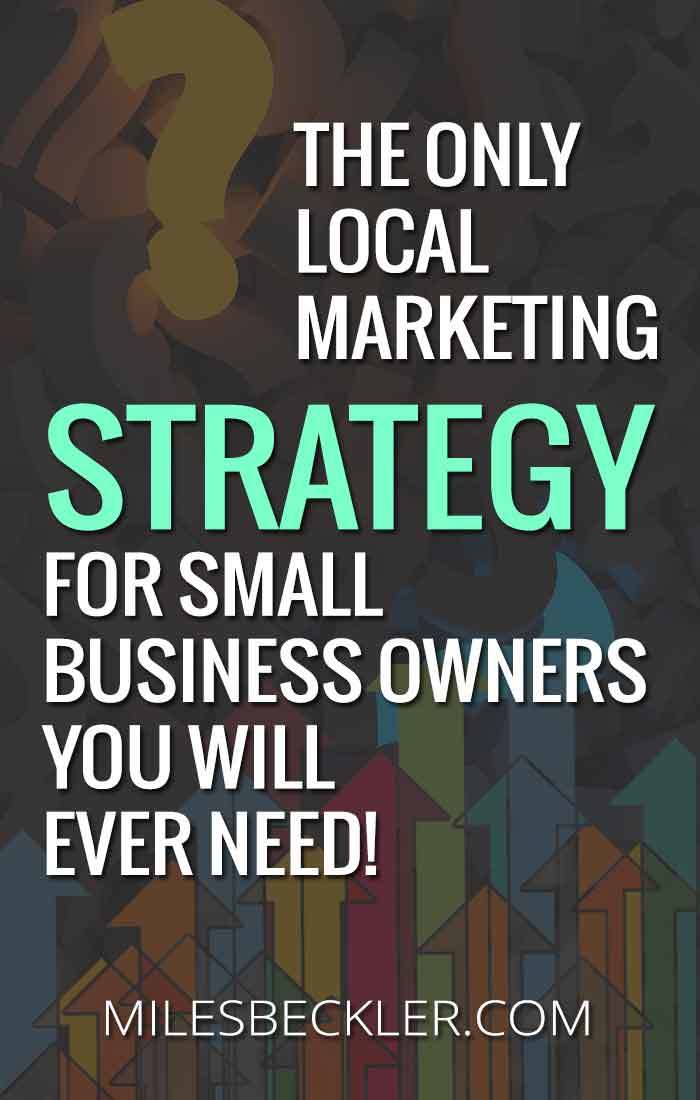
The number one differentiator in a local marketing strategy is your physical address.
Having your NAP in a few crucial places will tell Google and other search result deliverers that you are physically close to the searcher of your product or service.
Places like Yelp, Tripadvisor, Google, SuperPages, and more need to have a synchronous Name, Address, and Phone Number for your business.
Most businesses have inconsistent information on their website, Google My Business listing, and Facebook page, just to name the ones that you have likely created.
It then gets even worse with the hundreds of auto-completed ones by Yahoo, Bing, Yellow Pages, Yelp, FourSquare, and many more.
Do not skip this step.
Right now write down what your NAP is going to be.
Business Name
Business Address
Business Phone Number
Business Email Address
Website Address
You will use this information in all other steps, and it needs to be consistent in all of the steps.
Don't Make This Mistake
Do you have full control of your Facebook page, your Yelp page, your YouTube channel, FourSquare listing, your followers on Instagram?
No.
All of these platforms can be pulled out from under you, ban you, or just close down and everything you have built in that space, be gone overnight.
I made this mistake before with Myspace, (yes I’ve been in internet marketing that long) and I will never do it again.
My goal is to teach you the right foundation to build on the first time so that you can keep an online marketing system working for you and not wake up one day to see all of your efforts have disappeared overnight.
Build On The Right Foundation
With your NAP written down, it is important that the first place you put it is a place that you own, or your own WordPress site.
Don’t put all your effort into building on another platform that can change overnight and you have no control over.
I made the mistake of not doing this once and I will never do it again.
My goal is to teach you the right foundation to build your efforts on the first time. So here it is.
Own the Racecourse You Are Racing On
To make it as a small business owner you need to not only be building a brick and mortar business but simultaneously building an online business.
You will and should use Facebook, YouTube, Medium.com, and other platforms that your audience is on to grow your reach, but the content on those platforms needs to be set up to funnel them onto an online racecourse that you own.
I talk about why you need to remain in control of your online business in this video below. It is just as much the key to success for a local marketing strategy as it is necessary for a non-regional based business.
https://www.youtube.com/watch?v=x5Z0xGodRpc&t=419s
So where do we go to own the racecourse?
A WordPress website.
While there are many template building websites that appear as though you own what you buy, nothing could be further from the truth.
Squarespace, Wix, Weebly, and others are a closed platform that do not allow you to own anything except the domain.
WordPress is open source, and you build it on server space that you own.
With a WordPress website…
You buy a domain that you own, build and tweak your website on an open source platform that you own, buy hosting that you own, and add pages and posts on all of the properties that you own.
All of it will be yours, and most importantly, Google loves WordPress.
You likely already have a domain that you own so let’s get into the other pieces.
To Build on WordPress

A problem with many WordPress themes is they do not update their products as often as WordPress is updated. In the internet world, security is a foundation that we need to be aware of and make efficient and straightforward.
The WordPress open-source content management system is continually updated with security patches and user enhancements.
You need to choose a theme that, at a minimum, keeps up with these updates. Thrive Themes updates their products more often than the minimum needed to keep up with WordPress updates, and it will give you a great place to start your website, and you will never outgrow it.
It has everything from a basic website build to split testing landing pages and everything in between. At the time of writing this post, it is only $228 a year, and I do not know of a better $19 monthly lead generating, business reach expanding investment you can make for your business.
Buying Hosting

I go over all of this in my Web Hosting Conspiracy video, but the one I recommend is A2.
Unless you have visits to your website of more than 400 users at a single time, A2 is the only hosting company you will need.
Connect your Domain, Hosting, WordPress, and Thrive Themes
In this free sales funnel course I show you how to get your domain name connected with A2 hosting, install WordPress on your website, and install and set up Thrive themes.
When you get to the place in the course where I start to build the web pages, go into the impressive Thrive University online section (another reason that I love Thrive Themes is the included teaching resource is incredible) and build along with Thrive Themes co-founder Shane Melaugh.
Two essential elements to have a website optimized for Local search are; to have your Name, Address, and Phone number on the bottom of every page of your website, and include your Business Name, Primary keyword, City, and State abbreviation in the H1 tag of your homepage.
H1 tags and footers are explained in the Thrive University course.
Now let’s find that primary keyword and many more keywords to help as many people discover your local business as possible.
Keyword Research
Keyword research will be the guide for your short and long-term website growth strategy.
There are many keyword tools out there but there is only one that I use, and with its free account you have more than enough queries per day to beat your business competitors online.
The first thing you want to do is sign up for your free keyword research account on KW Finder.
With this free account, you will get three free keyword queries per day.
You will want to sign up for the free account so you’ll have the ability to save your searches and pull them up later.
Let’s pretend we are doing Keyword research for a Thai restaurant.
I type “Thai food” in the keyword tool search, sort by search volume, and get these results.
You want to build the first pages of your website for the search results with “right now” buying intent.
I add "near" as a filter, and this is what I get.
The main four web pages for our website are chosen on search data, not our intuition.
Let’s say the name of your domain is yummythai.com. The home page keyword would be "Thai Food" the most searched term in our business niche.
We write one to three hundred words about our Thai food, Thai food in general, a little story about our Thai restaurant, upload a couple of images of Thai food, and possibly embed a YouTube video that has Thai food in the title.
If we were located in Albuquerque New Mexico, and our restaurant name is Yummy Thai, our header, H1 would be something like this.
Yummy Thai - An Exquisite Thai Food Experience in Albuquerque NM
With your NAP in your website footer, you are on your way to ranking for "Thai food near me," "Thai food Albuquerque NM," "Thai food in your zip code," and "Thai food" searches on devices that are physically close to where your address is.
Repeat this for yummythai.com/thai-restaruant and yummythai.com/thai-delivery, yummythai.com/menu (words and pictures, not an uploaded pdf that Google cannot read), and you have your website menu filled out and a rocking optimized for local search to start your website.
Here’s what we have so far.
Home(Thai Food) Thai Restaurant Thai Delivery Menu Contact
It is time for what will set you apart and lead content partnering with Google to dominate Thai searches and beat every one of your local competitors on a google search for free! Way better that using Google paid ads!
Developing a Content Marketing Plan
Type Thai back into the KW Finder filter and get a page like this.
Then choose terms like Thai curry, Thai cuisine, pad thai noodles, Thai salad, Thai recipes, and click add to list.
Name your list.
Click Create list and add keywords.
In about seven minutes, without knowing anything about SEO, you can have an SEO plan for your local business.
The goal of this plan is to post at least two to eight blog posts each month and show Google that your site is more active than other sites in your location.
Don’t get overwhelmed by this, but you want to get to 50 pages as fast as possible. Create, have an employee create, or hire a writer to create a page a week and you are there in a year, create two a month, and you are there in two years. Either way, you will be beating the competition that built their five pages, uploaded their menu as a pdf image, and quit adding content to their website.
We can apply the grizzly bear joke to digital marketing.
You and your friend stumbleupon grizzly bears while hiking and you step down to tighten up your shoelaces. Your friend says “You are wasting your time. You can’t outrun grizzly bears.” You respond “You are right. I just have to outrun you.”
There is so much room right now in local search, and very few are playing the game, that all you have to do is beat the other local competition and you will win.
Will you take down allrecipes.com for pad thai recipe? Probably not. Also, you can’t sell your pad thai to a searcher in Seattle when you are in Little Rock, AR. You just have to beat the Little Rock, AR Thai restaurants and you will win the google traffic race against them.
You have your On-Site (website) content filled out using keyword research, you additionally need Off-site content for your local marketing strategy.
Social Media for Local Marketing
A problem many business owners face in digital marketing is “What do I post on social media?”
As you create content for your website you are simultaneously creating many pieces of content for social media, with very little additional effort.
When writing your website words, keep in mind what you can use for Facebook posts, Tweets, and Instagram photo descriptions.
Here’s what I recommend:
There are sentences and phrases from your website writings that will work great as social media posts. Save these clips from your writings, and you have social content ready to go.
Using this tactic if you write two blog posts a month, and 4 social blips are saved from each blog post, you have two social media posts a week written for you already.
Just copy the words of one of these clips and paste it as a start to a post for social media. Then copy the URL for the website page that clip came from, and paste it into post.
You now have a Facebook post funneling your Facebook fans back to your website.
You are engaging in inbound marketing.
Add a couple of posts a week featuring specials, a couple of posts a week of restaurant staff action photos, and you have a full social media calendar.
Off-Site Content - Where else to put your NAP?
The University where you received your degree, little league sports that you sponsor, networking groups, chambers you are a part of, Google My Business, and internet citations websites are all places you can have your Business Name, Address, and Phone Number.
These places expand your reach, and some of them are backlinks to your website that help your domain authority.
The most necessary of these is your Google My Business listing.
Google My Business
Google has a Google My Business system where you can create a free profile for your business.
Go to https://www.google.com/business/
If you have not done this already, you will have to request a postcard from Google to verify your business address.
They do this to verify listings and keep fake local listings out.
You will want to go through the whole set up process of Google My Business, making sure your Name, Address, and Phone Number match your master NAP list.
Don’t Overlook These Two Steps In Google My Business
1) If you offer services or deliver outside of your physical location, make sure to check the “I deliver my goods and services to customers at their location” when setting up your address.
This will broaden your google map listing to include the complete area that you serve.
Enter the locations you serve or select a radius around your business. If you also serve customers at your business, make sure you check the box that says “I also serve customers at my business address.”
2) Add a Primary category and Additional Relevant Categories
"The key takeaway for a local marketing strategy is that you do not need to create the most content in the world, you only need to beat the competition in your local area. "
You are more prepared for this section because of doing Keyword research earlier.
In your Google My Business settings, you will get to tell Google many categories that you do business in.
So, for the Thai restaurant example...
Type restaurant, and Google will populate all the catagories with the word restaurant.
Select Restaurant, Asian restaurant, Thai Restaurant, etc
Exhaust the additional Google categories with words from your keyword research to find as many as possible that are relevant to your business.
Don’t just choose restaurant and be done which is what your competition will do, beat them with additional categories for your Google My Business listing as well.
Local Citations

“A local citation is any online mention of the name, address, and phone number for a local business. Citations can occur on local business directories, on websites and apps, and on social platforms.”
Why this matters.
Google is crawling the entire web all of the time. When you have your NAP consistent in many of those places, it confirms to google where you are and what you do.
But, this rabbit hole can get VERY deep. You can quite literally spend more time fixing all of the citations of your business on the internet than writing words for your 50 pages of website content.
Additionally services like Moz Local, Yext, WhiteSpark, and Bright Local, just to name a few, all try to sell you online listing management services.
So where do we start and what do we do?
A good citations strategy for local marketing will include
Websites specific to your industry
Google My Business
Websites that rank on page one of Google for your industry and location
Websites listed in the Moz Local tool
Websites listed on the Moz citations by category list
If you know of any listing sites that are in your industry, start there. Add or fix your listings on those sites first.
Next place is Google.
Type in your primary keyword and see if any sites pop with competitor citations. For example, if Trip Advisor and a couple of local lists populate, then you want to get on those. They are ranking on page one of Google for the search result so people will likely be visiting those sites.
Next go through the free Moz Local tool. Input your business name and zip code, and it will show you eight or so results and if they need repair or if they need to be set up. Go through those from Moz Local one by one fixing or adding your citations on those sites.
One last simple place is the Moz citations by category.
Click on your business category in the Moz citations by category list, and add your NAP to any of those sites recommended for your business category.
Off-Site Content Link Building
Have you been featured in a local news article? Do you sponsor a local sports team or charity? Did you receive a degree from a college?
These and more places like these are ideas to get additional off-site mentions and links to your website.
Nifty Marketing has a useful list of Local Link Building ideas.
You never know who will give you a reference on their website, which is a backlink for yours, unless you ask.
The Most Important Takeaway for Your Local Marketing Strategy
The key takeaway for a local marketing strategy, is that you do not need to create the most content in the world, you only need to beat the competition in your local area.
Content is the fuel for the engine of the Internet, and the local winners in that race merely create consistent content.
You want to get to the place where marketing becomes a system; it is something you do week in and week out, not only when business is slow.
One new blog post per week is potentially that little thing you're doing that your competitors aren't doing that will give you the edge in local search results.
Develop a consistent content creation schedule for yourself, hire or trade your business product or service for writings with a local University student, or have an employee write blog posts for you instead of surfing on Facebook waiting for the phone to ring.
Continue to create consistent content, and you will be the winner of your local small business search race.
Just like it takes time to assemble tables and chairs, set up systems for servicing clients, and training employees; building your local marketing strategy for your small business takes time and work.
But like those tables, systems, and employees it will continue to work for you even when you are not working on it.

